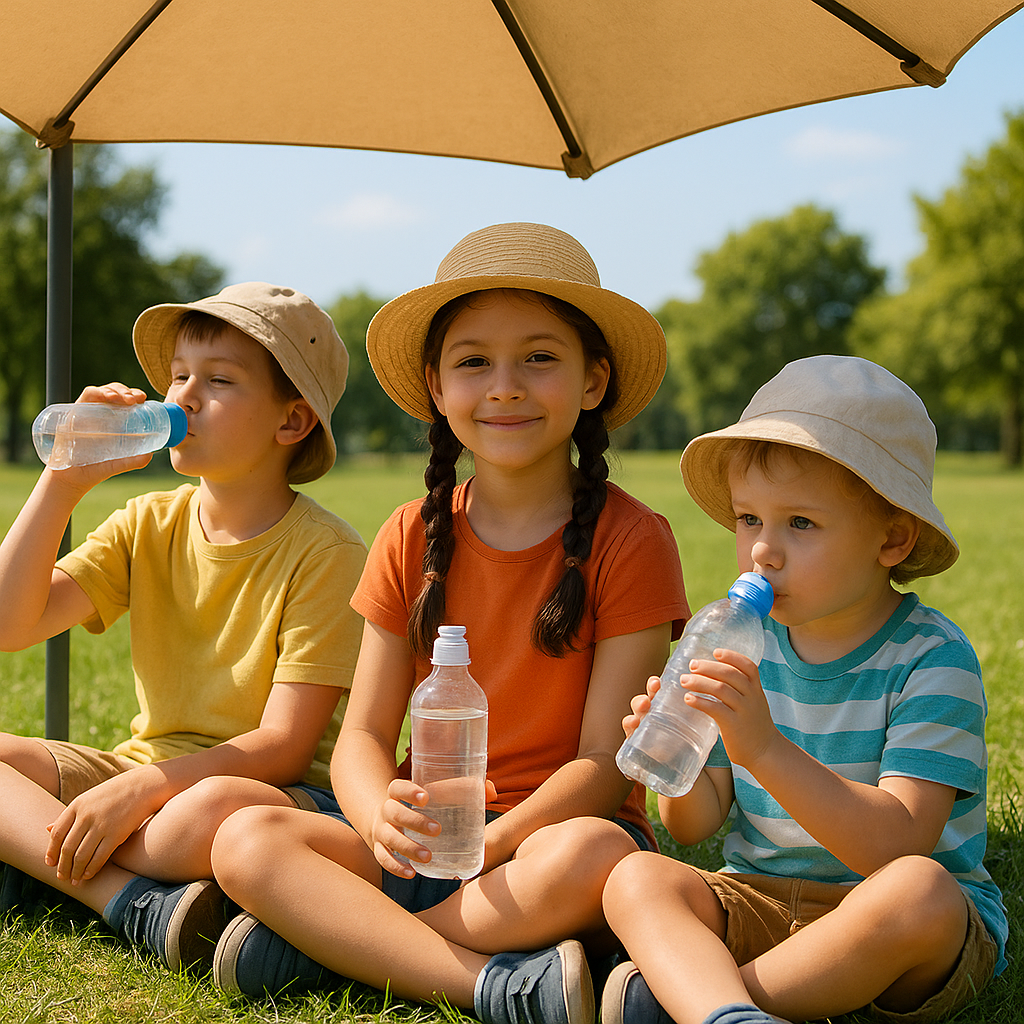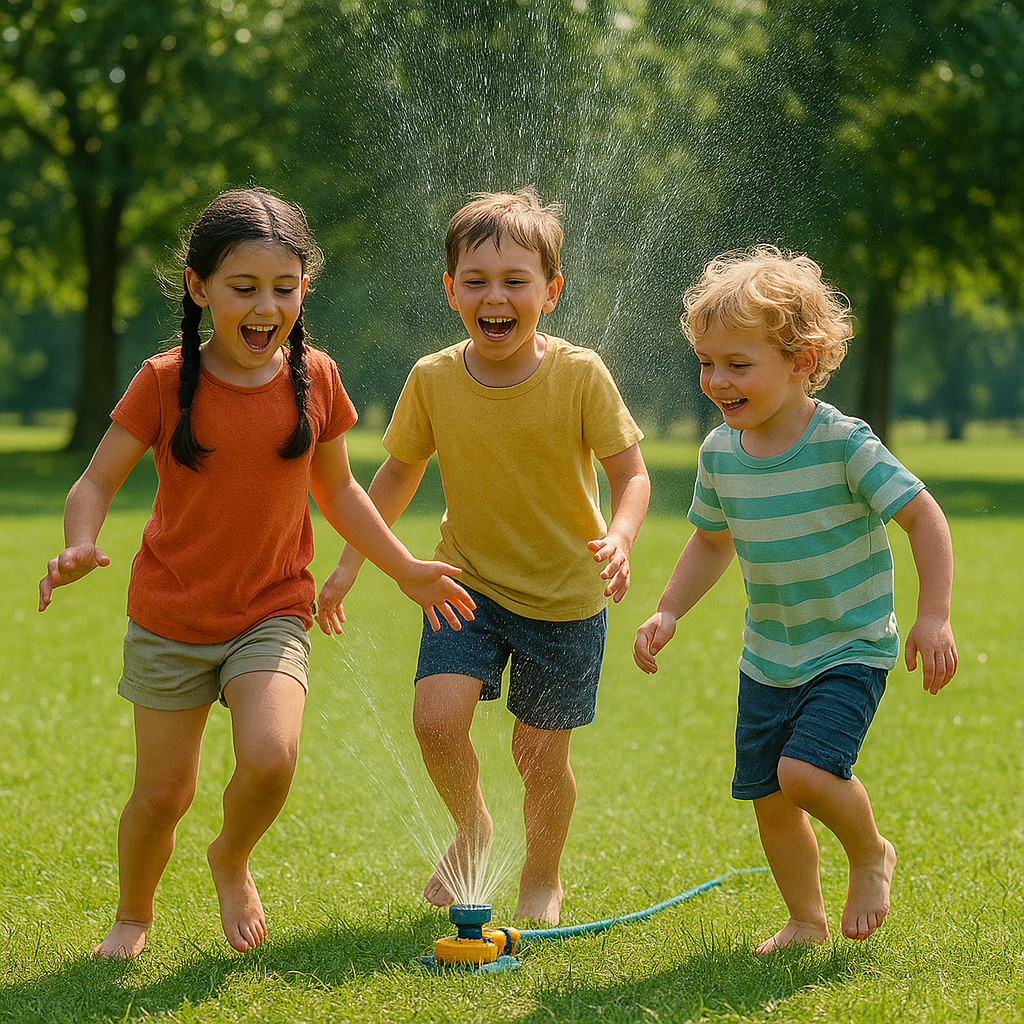Save Kids from Heat should be at the forefront of every caregiver’s mind as temperatures soar.
Children are more vulnerable to extreme heat than adults, and failing to take preventive steps can lead to heat exhaustion, heatstroke, and other serious health problems.

In this article, we’ll explore practical, research-backed strategies to save kids from heat-related dangers — from hydration and clothing choices to recognizing early warning signs and planning safer outdoor activities.
Why It’s Urgent to Save Kids from Heat
Children’s bodies don’t adjust to heat as efficiently as adults’. Their temperature regulation systems are still developing, and they often don’t recognize when they’re overheating or dehydrated. This makes them especially susceptible to:
- Heat exhaustion
- Heatstroke
- Sunburn
- Dehydration
In many regions, heatwaves are increasing in frequency and severity, making it critical for parents, teachers, and caregivers to prioritize safety. According to the World Health Organization (DoFollow), heat-related illnesses are preventable with the right knowledge and preparation.
Hydration: The First Step to Save Kids from Heat
Ensuring children drink enough fluids is the single most important way to save kids from heat.
Children lose water faster than adults, especially when playing or exercising. They might also forget to drink unless reminded. Here’s how to keep them hydrated:
- Offer water regularly — don’t wait until they’re thirsty.
- Avoid sugary or caffeinated drinks, which can worsen dehydration.
- For longer outdoor activities, provide electrolyte drinks (low sugar) if appropriate.
- Teach them to recognize signs of dehydration: dry mouth, dizziness, fatigue.
Even mild dehydration can quickly escalate during a heatwave. Keep a reusable water bottle handy and encourage frequent sips.
“See our guide on Essential Summer PPE: Adjusting Gear for Hot Weather Conditions for workers, which also shares tips useful for family outings.”
Clothing Choices to Help Save Kids from Heat
What your child wears can dramatically impact their risk of overheating. Save kids from heat by dressing them appropriately:
- Choose lightweight, loose-fitting, and light-colored clothes that reflect sunlight.
- Opt for breathable fabrics like cotton or moisture-wicking sportswear.
- Don’t forget a wide-brimmed hat to protect face and neck.
- Sunglasses with UV protection reduce eye damage risk.
- Apply broad-spectrum sunscreen (SPF 30 or higher) on exposed skin every 2 hours.
Clothing is the first line of defense against sunburn, which increases body heat and dehydration risk.
Scheduling Outdoor Activities Wisely
To truly save kids from heat, think about when you let them play outdoors:
- Avoid outdoor play during peak heat hours (typically 11 AM – 4 PM).
- Schedule outings for early morning or evening when temperatures are cooler.
- Plan shaded routes for walks or bike rides.
- Incorporate frequent shade breaks and hydration stops.
Many parents underestimate how quickly kids can overheat during seemingly short outdoor sessions. Use a weather app to track heat alerts in your area.
Learn about Heat Alerts and Health (DoFollow) for timely warnings.
Creating Safe Outdoor Spaces to Save Kids from Heat
If your children play outside at home, make your yard safer:

- Install shade structures like umbrellas, canopies, or pergolas.
- Use sprinklers or small kiddie pools for supervised cooling play.
- Plant trees or shrubs for natural shade.
- Set up cool-down zones with cold drinks and damp towels.
A shaded play area reduces the risk of direct sun exposure and helps maintain safer temperatures.
For workplaces, see our Working Near Water: Drowning Prevention and Heat Risk article for combined water safety and heat risk management.
Warning Signs: How to Save Kids from Heat by Spotting Trouble Early
Recognizing early symptoms can save kids from heat emergencies before they escalate. Watch for:
- Excessive sweating or red, hot, dry skin
- Complaints of dizziness, headache, or nausea
- Weakness or confusion
- Rapid breathing or heartbeat
- Fainting
If a child shows these signs:
- Move them immediately to a cool, shaded area or indoors.
- Loosen or remove clothing.
- Apply cool, damp cloths to the body or fan them gently.
- Offer small sips of cool water if conscious.
- Seek medical help immediately if symptoms are severe (especially confusion, fainting, or lack of sweating).
Note: Heatstroke is a medical emergency. Always call 911 if you suspect it.
Vehicle Safety: A Critical Way to Save Kids from Heat
Never, ever leave a child unattended in a car — even for a minute.
- Temperatures inside cars can soar 20°C (35°F) higher than outside in minutes.
- Even mild days can be deadly.
- Cracking windows does not prevent dangerous heating.
Make it a routine to “look before you lock” and keep car keys out of children’s reach to avoid accidental lock-ins.
Many tragic deaths can be prevented simply by checking the back seat every time.
Kids and Car Safety (DoFollow) for more vehicle safety strategies.
Cooling Strategies to Save Kids from Heat at Home
When it’s hot outside, keep indoor spaces cooler:
- Use fans and air conditioning if available.
- Close curtains or blinds during the day to block heat.
- Encourage cool baths or showers.
- Serve cold snacks like fruit or yogurt.
- Create “cooling stations” with damp cloths or spray bottles.
If you don’t have AC, consider visiting public places like libraries or shopping centers during extreme heat.
Building a Heat Safety Plan to Always Save Kids from Heat
Finally, prevention works best when it’s planned:
- Check daily weather forecasts for heat alerts.
- Pack extra water and sunscreen when going out.
- Educate kids about listening to their bodies.
- Coordinate with schools or camps about heat protocols.
- Make a list of emergency contacts.
A little preparation can save kids from heat all summer long — and make outdoor play much safer and more fun.
Make It Your Mission to Save Kids from Heat
Save Kids from Heat should be more than a seasonal reminder; it’s a critical, ongoing responsibility. By staying vigilant about hydration, clothing, scheduling, and warning signs, caregivers can dramatically reduce the risk of heat-related illnesses.
Let’s work together to create safer, cooler environments for our children — because every child deserves to play, explore, and grow without the threat of dangerous heat.

No comments yet